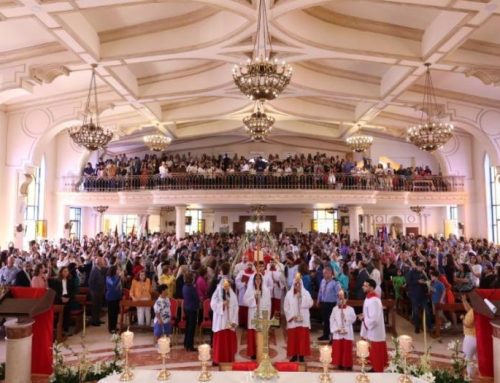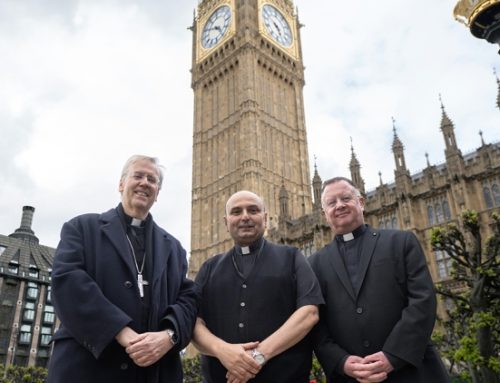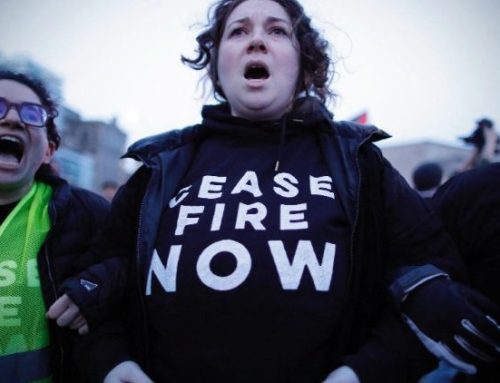In 2014, on the eve of Pope Francis’ visit to the Holy Land, Israel’s official statistics detected 161,000 Christians (of all Denominations) in Israeli territory.
At the end of December 2023, the Israeli Office of Statistics counted almost 188,000, — 3,000 more than in 2022, 6,000 more than in 2021, and 27,000 more than when Pope Francis visited the country.
The above numbers refer to the population living in Israeli territory, that is, it doesn’t include Christians that live in territories of the National Palestinian Authority (for example, Bethlehem, the West Bank, etc.) or those that live in Jordan, although all these territories are also included in the Holy Land and are shepherded by the Latin Patriarchate and the Custos of the Holy Land (in addition to other Eastern Catholic Churches or those of other Denominations).
Of the Christians that live in Israel, 75.3% are of Arab ethnicity.
Almost 7% of Arabs living in Israeli territory are Christians (of different Churches and Rites).
The demographic Report dated December 31, 2022 estimated the total population in Israel to be 9,656,000 inhabitants. Of these, 7,106,000 are Jews, 2,037,000 are Arabs and 513,000 belong to other categories.
Babies Born in Israel
The statistics also include weddings and births. In 2022 — 2,343 babies were born of Christian women in Israel, 73% of whom (1,700) were children of Arab Christians. The rest of Christians (and their babies) could be immigrants that arrived from the West, and from India, the Philippines, Africa or the former Soviet Union . . .
The total fertility rate in 2022 was 1.68 children per Christian woman, being slightly fewer, 1.62 among Arab Christian women. In comparison, the general fertility rate in Israel in 2023 was 2.931 births per woman, showing a decrease of 0.78% compared to the previous year.
In 2021, year still affected by the pandemic, there were 815 Christian weddings in Israel. The average age of Christian grooms was 30.7 years, whereas the average age of brides was 27.4 years. Christians marry later than Jews and Muslims, who marry younger.
The majority of Arab Christians reside in the North District, which includes the whole of Galilee (70.2%) and the Haifa District (13.6%), whereas 36.5% of non-Arab Christians live in these areas and 38.7% live in the center of the country and in Tel Aviv.
70.5% of Christians are actively working, although if only Arab Christians are measured they are only 62.2%.
Christians That Aren’t Counted
There are analysts that consider that although Israeli statistics measure quite well the number of Arab Christians, they underestimate the amount of Christians of other origins, beginning with Jews who might have converted to Christianity (but appear as Jews in the statistics), those that consider themselves messianic Jews (Jews in the census, but who believe in Jesus as Lord, Messiah and Saviour) and many immigrants of the former Soviet Union and their children who stated they were Jews to enter Israel for having a mother or a grandmother of Jewish ethnicity, but feel themselves and live as Christians, in general they are Greek Orthodox or Armenians.
In 2014 French journalist Catherine Dupeyron, author of the book “Christians in the Holy Land: Disappearance or Mutation?” (2007) recalled that of the 300,000 Israelis registered officially as “without religion,” in reality many were immigrants of Russian or post-Soviet origin who have an Orthodox Christian religion.
In addition, there are immigrants from the Philippines, Eritrea and Sudan who are Christians and whose legal situation is complex and do not appear sufficiently on the radar of the Israeli statistics.
In any case, the Latin Patriarch has under his custody not only Catholics of the Latin Rite of Israel, but also those of the West Bank, Jordan and Cyprus, who all together add up to 340,000 Catholics in some 70 parishes of the Latin Patriarchate. Moreover, there are Catholic Christians of other Rites as well as non-Catholic Christians.
By: Valentina di Giorgio






